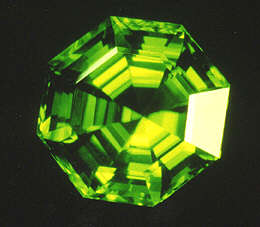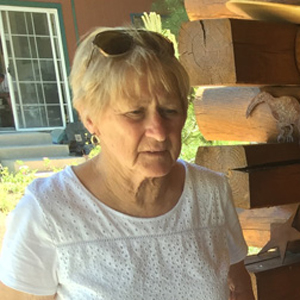The Olivine Peridot
Cleopatra was reported to have a fine collection of emerald jewelry, but rumor has it that it was really peridot. We hope she won't be too disappointed. Peridot was mined on an island in the Red Sea called Zebirget or St. John's Island, thousands of years ago. These peridot are a magnificent green color and truly deserved a place in royal jewelry.
2 Minute Read
Cleopatra was reported to have a fine collection of emerald jewelry, but rumor has it that it was really peridot. We hope she won't be too disappointed. Peridot was mined on an island in the Red Sea called Zebirget or St. John's Island, thousands of years ago. These peridot are a magnificent green color and truly deserved a place in royal jewelry.
Peridot has also been called "olivine," the proper mineral name, and it was referred to as "chrysolite" by the ancients. Peridot ranges in color from a yellowish green to pure green to a nearly olive green color. The finest peridot, the Egyptian material, has a minimum of yellow in it and is a bright clear green. Unfortunately the Egyptian material is no longer mined and not readily available on the market. You can find fine Burmese peridot, which is fairly rare, in sizes over ten carats, with a fairly dark clear green color with only a hint of yellow. Norwegian peridot is yellowish green but it is much softer in color than the other sources. Arizona material is readily available in sizes under five carats and is characteristically a bright yellowish green. It is mined on a Reservation by the San Carlos Indians.
| Colors: | Yellowish-green to olive-green to brown |
| R.I.: | 1.65 - 1.69 |
| Durability: | Fragile |
| S.G.: | 3.3l - 3.48 |
| Treatment: | None known |
| Hardness: | 8 1/2 |
| Availability: | Sizes under 5 carats abundant. Larger sizes rare |
| Localities: | Arizona, Myanmar (Burma), Brazil, Norway, Egypt, and Mexico |
| Prices: | Low to moderate |
| Common shapes: | All possible shapes in small faceted material |
Inclusions in peridot are common. Very fine, nearly dust-like inclusions is common in Burmese material; it gives it a "sleepy" appearance. "Lily-pad" inclusions can be found from all peridot sources.
Peridot is a fragile stone; it is brittle and will abrade easily around facet junctions. It should be set into protective mounting. Never put peridot in an ultrasonic cleaner: it may not break but the internal fracture may be massive.
Peridot over ten carats with a bright medium green color with a minimum of yellow and good transparency with no sleepiness or visible inclusions will command the highest price per carat. Fine stones will fall into a moderate price per carat category. Large peridot even of lesser quality will usually be in the lower end of the moderate per carat price range due to its rarity. Peridot under two carats will usually fall into the low price per carat category even for fine qualities. Fine quality stones in two to five carat sizes may be in the moderate price range but olive colored material or heavily included stones will fall into the low price per carat group.
| Peridot (Photo by ICA/Bart Curren) |
Small peridot is sold as "Pele's tears" in Hawaii, after Pele, the goddess of volcanoes. Very small peridot is found in volcanic material in Hawaii but the stones in the shops are mostly from Arizona! Peridot is also found in the diamond pipes of South Africa and in rare occasions may be found as minute inclusions in diamonds. Peridot, in its finer qualities, is a very beautiful stone; it is worth looking a little to find some good quality stones.
You assume all responsibility and risk for the use of the safety resources available on or through this web page. The International Gem Society LLC does not assume any liability for the materials, information and opinions provided on, or available through, this web page. No advice or information provided by this website shall create any warranty. Reliance on such advice, information or the content of this web page is solely at your own risk, including without limitation any safety guidelines, resources or precautions, or any other information related to safety that may be available on or through this web page. The International Gem Society LLC disclaims any liability for injury, death or damages resulting from the use thereof.
The All-In-One Jewelry Making Solution At Your Fingertips
When you join the Ganoksin community, you get the tools you need to take your work to the next level.
Trusted Jewelry Making Information & Techniques
Sign up to receive the latest articles, techniques, and inspirations with our free newsletter.



